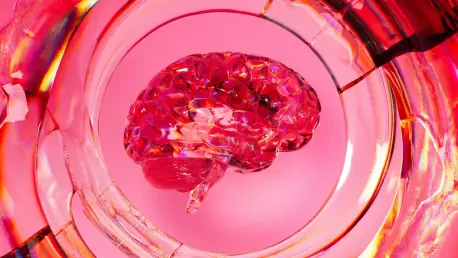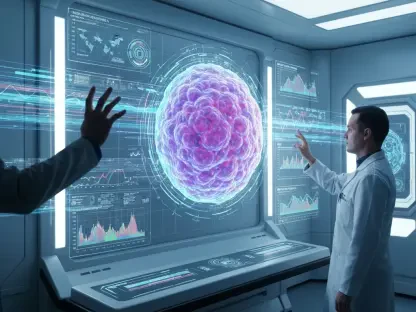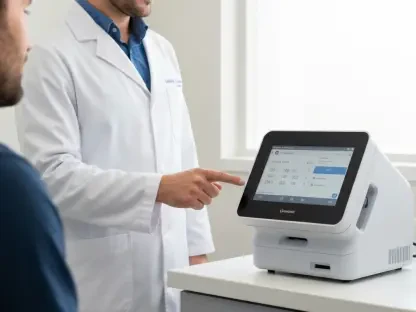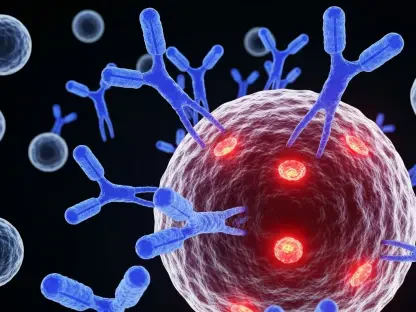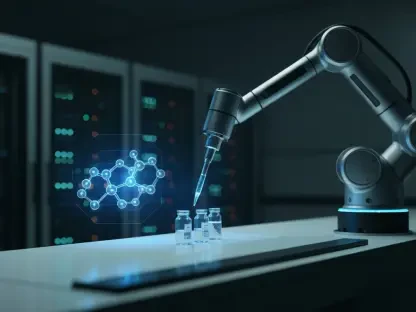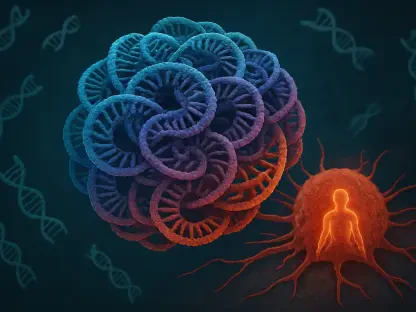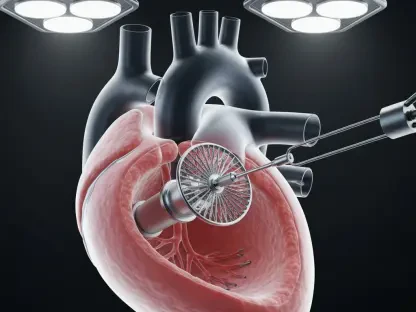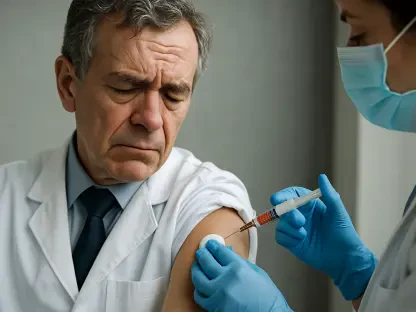In an era where brain disorders continue to challenge modern medicine, researchers have made a notable advancement that could redefine stem cell therapies. By combining magnetic microrobots with ultrasound stimulation, scientists have created a technology that may offer new hope for conditions like Alzheimer’s and Parkinson’s disease. These innovative microrobots, known as “Cellbots,” are crafted by integrating human neuroblastoma cells with magnetic nanoparticles. This cutting-edge approach promises unprecedented precision in stem cell delivery and differentiation, resolving some of the most pressing challenges in treating neurodegenerative diseases. Unlike traditional therapies, which often struggle with precise cell placement and development control, the fusion of magnetic navigation and ultrasound stimulation brings remarkable accuracy and efficiency to the process. This synergy not only allows for the exact placement of stem cells within the brain but also promotes their maturation into neurons with enhanced neural growth capabilities.
Revolutionizing Stem Cell Therapy
The introduction of Cellbots marks a significant advancement in stem cell therapy, addressing limitations that have historically hindered treatment efficacy. Traditional stem cell therapies struggle to achieve precise positioning and maturation, often leading to suboptimal integration within the brain’s complex network. However, the dual-technology approach offers solutions by facilitating both placement accuracy and accelerated neuron development. Utilizing magnetic navigation, researchers can direct stem cells with exactitude to targeted areas within the brain, something previously unattainable with conventional methods. Moreover, ultrasound stimulation aids in the maturation process, resulting in neural extensions that are almost twice as long compared to unstimulated cells. This allows for enhanced connectivity and functionality, potentially transforming how treatments are approached for various neurological conditions. As researchers continue to refine this technique, its implications extend beyond neurodegenerative diseases, offering promising possibilities for stroke recovery and advanced drug testing, thereby hinting at a larger impact on medical practices.
Precision Technology Development
The refinement of ultrasound technology plays a crucial role in enabling the precision required for effective stem cell therapies. Advances, including the integration of piezoelectric micromachined ultrasound transducers (pMUT), have allowed researchers to achieve micrometer-level precision in cell manipulation without damaging surrounding tissue. This groundbreaking development not only ensures targeted delivery but also maintains the integrity of the surrounding brain environment. Such precision is vital for the successful integration of stem cells into existing neural pathways, effectively repairing damaged circuits with unprecedented accuracy. The implications of this technology are vast, presenting potential pathways for researching and curing incurable brain disorders. Although the integration of Cellbots has not yet been tested in living organisms, efforts are underway to optimize and scale the system for clinical use. The ultimate goal is a viable and practical solution to treat millions facing brain-related ailments, showcasing a promising future for both theoretical research and clinical applications.
Vision for Clinical Implementation
As researchers strive to translate this breakthrough into clinical practice, optimizing every facet of these technologies becomes imperative. While lab tests have showcased promising results, transitioning to real-world applications presents several challenges. Scaling up the production of Cellbots and ensuring consistent efficacy across diverse patient demographics are among the hurdles to address. Furthermore, refining the interface between microrobots and human physiology remains a focal point in development. By advancing testing methodologies and collaborating across interdisciplinary fields, scientists aim to overcome these obstacles, bringing innovative treatments closer to patient application. The expectation is a new standard in precision stem cell therapy, allowing for the targeted repair and regeneration of brain tissues, thus providing relief and recovery for those suffering from debilitating neurological conditions. With continual progress, the vision of integrating magnetic microrobots into medical practice becomes increasingly realistic, ushering in a transformative era in the treatment of brain disorders.
Promising Future for Brain Disorder Treatment
In today’s world, where brain disorders present ongoing challenges for modern medicine, researchers have made significant strides that could transform stem cell therapies. By merging magnetic microrobots with ultrasound stimulation, scientists have developed a promising technology offering new hope for illnesses like Alzheimer’s and Parkinson’s. These state-of-the-art microrobots, named “Cellbots,” are formed by integrating human neuroblastoma cells with magnetic nanoparticles. This advanced method promises unparalleled precision in delivering and differentiating stem cells, tackling key challenges in neurodegenerative disease treatment. Traditional therapies often wrestle with accurately placing cells and managing their development. However, the combination of magnetic navigation with ultrasound stimulation introduces remarkable precision and efficiency. Together, these techniques not only ensure the precise placement of stem cells within the brain but also aid in their transformation into neurons, paving the way for enhanced neural growth abilities.
